#Austin American Statesmen
Text
Texas investigators say the stabbing of a Palestinian-American man protesting against the war in Gaza meets the police definition of a hate crime.
The alleged attack took place on Sunday near the University of Texas in Austin.
The suspect allegedly rode a bike up to a truck carrying four Muslims and tried to rip down a scarf from the vehicle bearing the words "Free Palestine".
On Wednesday, Austin Police Department officials said Bert James Baker, 36, had committed a hate crime.
The ruling from the police Hate Crimes Review Committee says that it will now be up to the Travis County District Attorney's Office to determine what charges he will ultimately face.
Zacharia Doar, 23, was stabbed in the chest during a fight with Mr Baker, according to a police report of the incident.
The group was attacked after attending a pro-Palestinian protest at the state capitol, according to the Council on American-Islamic Relations, which has advocated for hate crime charges against their attacker.
Mr Baker is accused of trying to open the truck's tailgate, and yelling racial slurs at the group in order to provoke a fight, according to the police report.
One witness told the Austin American-Statesmen newspaper that he helped by using the scarf - a traditional Palestinian keffiyeh - to staunch the bleeding.
"In that moment, it was just extremely terrifying," said Suhaib Shah.
"Just seeing the amount of pain that this guy was in who had been stabbed and how much he was bleeding and just seeing how distraught the kids were."
Mr Doar has undergone surgery and is now in recovery, his family says.
Attacks on Muslims and Jews have risen since the 7 October attack by Hamas and Israel's ground invasion of Gaza.
In November, three men of Palestinian descent in Vermont were shot while wearing keffiyehs and speaking Arabic during a walk.
8 notes
·
View notes
Text
Season season of popular 'Yellowstone' spin-off to film in Texas
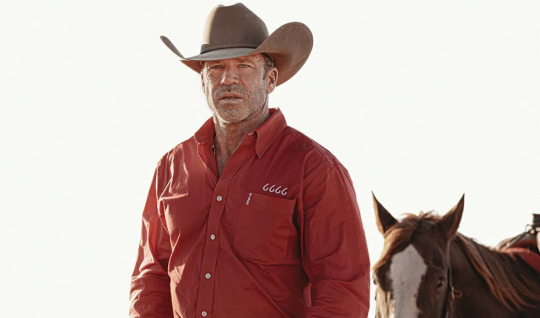
Production of the Paramount Network’s popular “1923” series is set to return this summer, but not in Montana, where the cast and crew created the first season.
Instead, the second season of the “Yellowstone” spin-off will be filmed throughout Texas, with Austin serving as a base of operations.
The Western drama starring Helen Mirren and Harrison Ford follows an American family navigating life during Prohibition, drought and the early stages of the Great Depression.
It is a prequel to Paramount’s award-winning “Yellowstone” TV series and a sequel to the network’s “1883” show.
According to city documents, the production plans to hire 200 Austin residents for crew, cast and extra positions.
Filming will begin in July and end in September, and ATX Studios will host the production’s offices and sound stage.
The Austin American-Statesmen reports that the production is expected to pump more than $51 million into Austin’s economy from wages, hotel stays and other local services.
According to the newspaper, Austin City Council has approved an incentive for a production company working on the show, King Street Productions Inc., to hire local workers. The company is expected to pay around $15 million in local wages.
In total, the budget for the production is estimated at over $150 million.
0 notes
Text
Matthew McConaughey Calls For 'Gun Responsibility' Amid Mass Shooting 'Epidemic'
Matthew McConaughey Calls For ‘Gun Responsibility’ Amid Mass Shooting ‘Epidemic’
“We have an epidemic of indiscriminate mass shootings, of parents burying their children, of inaction, and buck-passing.”
Matthew McConaughey is asking for “gun responsibility.”
The 52-year-old actor penned a letter to the Austin American-Statesmen after his home town of Uvalde, Texas was the site of a mass shooting two weeks ago.
McConaughey noted that he is “a father and a gun owner, the son…

View On WordPress
0 notes
Text

"𝑰 𝒉𝒂𝒅𝒏’𝒕 𝒅𝒐𝒏𝒆 𝒎𝒖𝒄𝒉 𝒘𝒐𝒓𝒌 𝒂𝒔 𝒂𝒏 𝒂𝒄𝒕𝒐𝒓 𝒐𝒕𝒉𝒆𝒓 𝒕𝒉𝒂𝒏 𝒃𝒆𝒊𝒏𝒈 𝒐𝒏 𝒕𝒉𝒆 𝒔𝒆𝒕 𝒐𝒇 𝑳𝒐𝒔𝒕 𝑩𝒐𝒚𝒔 𝒂𝒏𝒅 𝒋𝒖𝒔𝒕 𝒍𝒐𝒐𝒌𝒊𝒏𝒈 𝒕𝒉𝒆 𝒑𝒂𝒓𝒕"
He said with an unmistakable but not painful New York accent.
"𝑻𝒉𝒆 𝒉𝒂𝒓𝒅𝒆𝒔𝒕 𝒑𝒂𝒓𝒕 𝒇𝒐𝒓 𝒎𝒆 𝒘𝒂𝒔 𝒈𝒆𝒕𝒕𝒊𝒏𝒈 𝒊𝒏𝒕𝒐 𝒄𝒉𝒂𝒓𝒂𝒄𝒕𝒆𝒓 𝒂𝒏𝒅 𝒈𝒂𝒊𝒏𝒊𝒏𝒈 𝒎𝒚 𝒄𝒐𝒏𝒇𝒊𝒅𝒆𝒏𝒄𝒆 𝒕𝒐 𝒌𝒏𝒐𝒘 𝑰 𝒄𝒐𝒖𝒍𝒅 𝒑𝒖𝒍𝒍 𝒕𝒉𝒊𝒔 𝒐𝒇𝒇. 𝑻𝒉𝒆 𝒇𝒊𝒓𝒔𝒕 𝒅𝒂𝒚 𝒐𝒇 𝒔𝒉𝒐𝒐𝒕𝒊𝒏𝒈 𝑰 𝒘𝒂𝒔 𝒓𝒆𝒂𝒍𝒍𝒚 𝒏𝒆𝒓𝒗𝒐𝒖𝒔"
Citing his training as "𝑨 𝒄𝒐𝒖𝒑𝒍𝒆 𝒐𝒇 𝒂𝒄𝒕𝒊𝒏𝒈 𝒄𝒍𝒂𝒔𝒔𝒆𝒔 𝒃𝒖𝒕 𝒏𝒐𝒕𝒉𝒊𝒏𝒈 𝒎𝒂𝒋𝒐𝒓." Wirth said the acting bug bit when his agent suggested he read a monologue.
"𝑰 𝒉𝒂𝒅 𝒂 𝒃𝒊𝒈 𝒇𝒆𝒂𝒓 𝒐𝒇 𝒔𝒑𝒆𝒂𝒌𝒊𝒏𝒈 𝒃𝒖𝒕 𝑰 𝒉𝒂𝒅𝒏’𝒕 𝒕𝒓𝒊𝒆𝒅 𝒂𝒏𝒚𝒕𝒉𝒊𝒏𝒈 𝒍𝒊𝒌𝒆 𝒕𝒉𝒊𝒔 𝒃𝒆𝒇𝒐𝒓𝒆. 𝑰 𝒘𝒂𝒔 𝒕𝒐𝒕𝒂𝒍𝒍𝒚 𝒂𝒇𝒓𝒂𝒊𝒅 𝒃𝒖𝒕 𝒊 𝒅𝒊𝒅 𝒊𝒕 𝒂𝒏𝒚𝒘𝒂𝒚, 𝒂𝒏𝒅 𝑰 𝒈𝒐𝒕 𝒂 𝒕𝒐𝒕𝒂𝒍 𝒂𝒅𝒓𝒆𝒏𝒂𝒍𝒊𝒏𝒆 𝒓𝒖𝒔𝒉 𝒇𝒓𝒐𝒎 𝒉𝒂𝒗𝒊𝒏𝒈 𝒈𝒐𝒏𝒆 𝒕𝒉𝒓𝒐𝒖𝒈𝒉 𝒊𝒕.𝑰𝒕 𝒇𝒆𝒍𝒕 𝒈𝒐𝒐𝒅."
~Austin American-Statesmen 1989~
#billy wirth#young actor#the lost boys#dwayne the lost boys#young#actor#war party#1989#interview#newspaper#young billy wirth#80s
60 notes
·
View notes
Photo
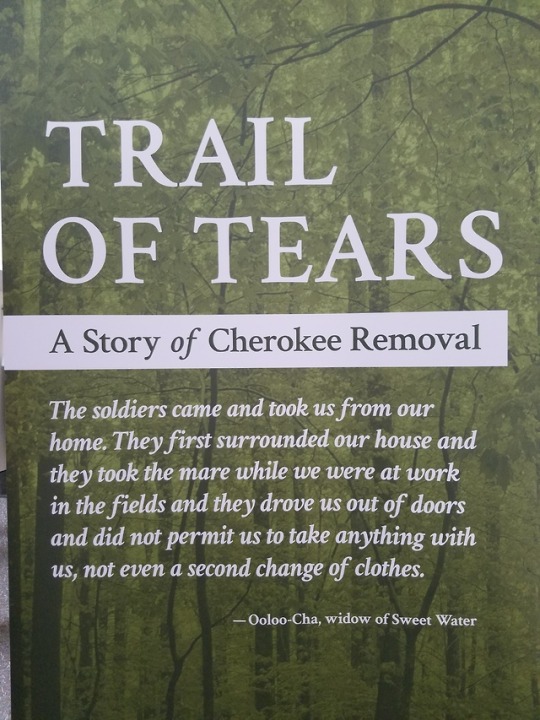
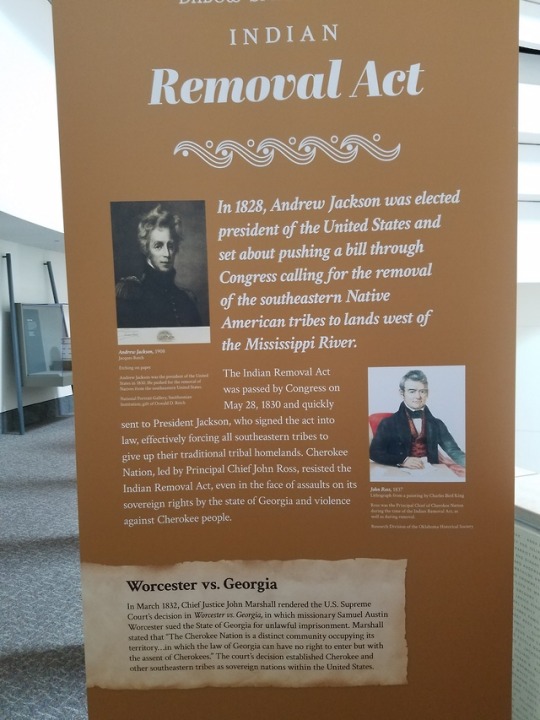
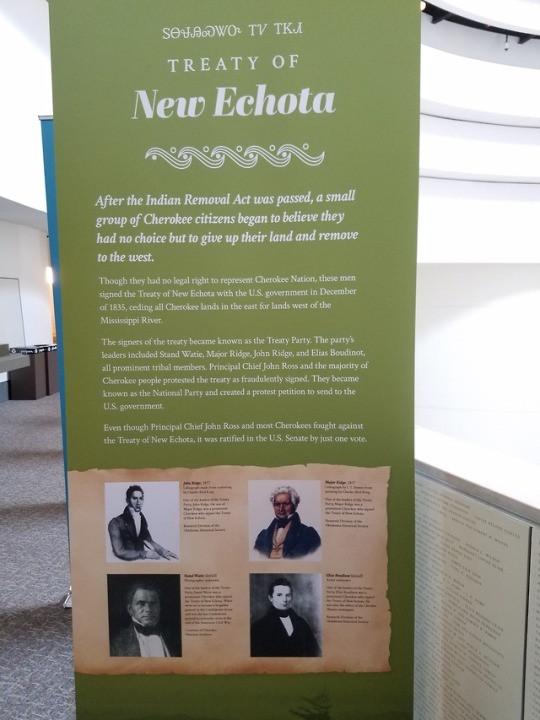
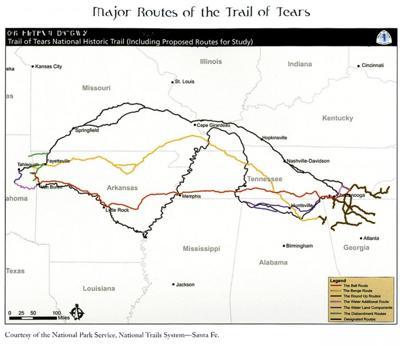
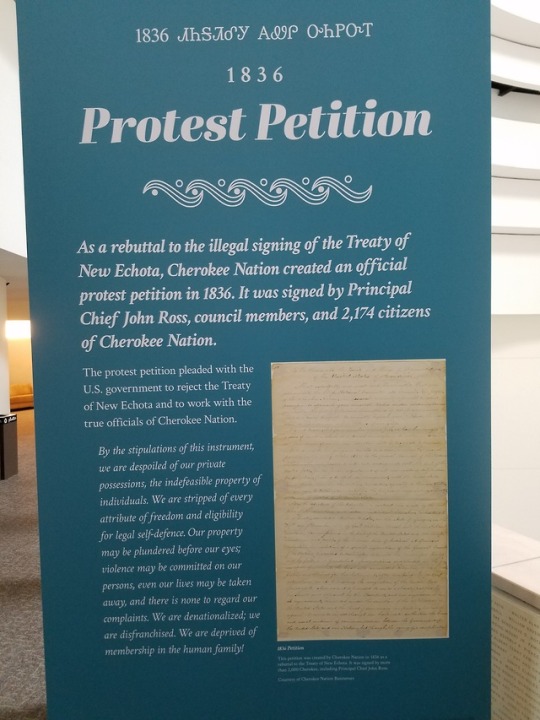

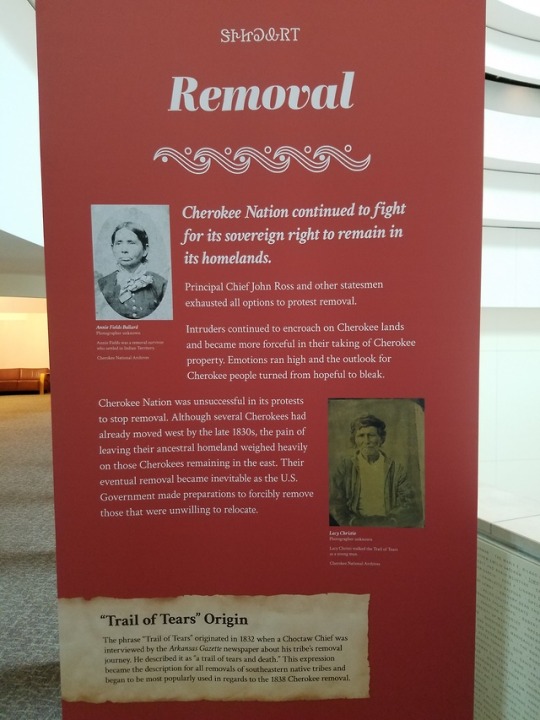
1. Trail of Tears: A Story of Cherokee Removal
The soldiers came and took us from our home. They first surrounded our house and they took the mare while we were at work in the fields and they drove us out of doors and did not permit us to take anything with us, not even a second change of clothes.
~ Ooloo-Cha, widow of Sweet Water
2. Removal Act
In 1828, Andrew Jackson was elected president of the United States and set about pushing a bill through Congress calling for the removal of the southeastern Native American tribes to lands west of the Mississippi River.
The Indian Removal Act was passed by Congress on May 28, 1830 and quickly sent to President Jackson, who signed the act into law, effectively forcing all southeastern tribes to give up their traditional tribal homelands. Cherokee Nation, led by Principal Chief John Ross, resisted the Indian Removal Act, even in the face of assaults on its sovereign rights by the state of Georgia and violence against Cherokee people.
Worcester vs. Georgia
In March 1832, Chief Justice John Marshall rendered the Supreme Court's decision in Worcester vs. Georgia, in which missionary Samuel Austin Worcester sued the state of Georgia for unlawful imprisonment. Marshall stated that "The Cherokee Nation is a distinct community occupying its territory...in which the state of Georgia can have no right to enter but with the assent of Cherokees. The court's decision established Cherokee and other southeastern tribes as sovereign nations within the United States.
3. Treaty of New Echota
After the Indian Removal Act was passed, a small group of Cherokee citizens began to believe they had no choice but to give up their land and remove to the west.
Though they had no legal right to represent Cherokee Nation, these men signed the Treaty of New Echota with the U.S. government in December of 1835, ceding all Cherokee lands in the east for lands west of the Mississippi River.
The signers of the treaty became known as the Treaty Party. The party's leaders included Stand Watie, Major Ridge, John Ridge, and Elias Boudinot, all prominent tribal members. Principal Chief John Ross and the majority of Cherokee people protested the treaty as fraudulently signed.They became known as the National Party and created a protest petition. to send to the U.S. government.
Even though Principal John Ross and most Cherokee fought against the Treaty of New Echota, it was ratified in the U.S. Senate by just one vote.
4. Forced Removal
As the May 23rd deadline for voluntary removal approached, President Martin Van Buren assigned General Winfield Scott to head the forcible removal of Cherokee citizens.
General Scott arrived in Athens, TN, on May 8 1838, and issued his first orders from there on May 10 to an army of about 2,200 federal soldiers. They began forcing Cherokees from their homes at bayonet point.
Roundups occurred day and night as people were herded like animals into stockade camps, where they were held in the heat of the summer to wait for their removal west. Some Cherokees remained in these camps up to five months before departure. Many became sick from disease and died.
By June 1838, nearly 3,000 Cherokees began the journey west in three detachments led by the U.S. Military. The summer weather caused many delays, and sickness continued to spread in the camps. By the end of June, Scott made a decision to suspend removal until September.
5. Protest Petition, 1836
As a rebuttal to the illegal signing of the Treaty of New Echota, Cherokee Nation created an official Protest Petition in 1836. It was signed by Principal Chief John Ross, council members, and 2,174 citizens of Cherokee Nation.
The protest petition pleaded with the U.S. government to reject the Treaty of New Echota and to work with the true officials of Cherokee Nation.
"By the stipulations of this instrument, we are despoiled of our private possessions, the indefeasible property of individuals. We are stripped of every attribute of freedom and eligibility for legal self-defense. Our property may be plundered before our eyes; violence may be committed on our persons, even our lives may be taken away, and there is none to regard our complaints. We are denationalized; we are disfranchised. We are deprived of membership in the human family!"
6. Tribal Self Removal
After seeing the conditions of the stockades and learning of hardships faced by Cherokees who had already been forcibly removed, Principal Chief John Ross requested that General Winfield Scott allow him to oversee the remainder of the removal process.
Ross argued that, as leader of Cherokee Nation, he could better provide for the needs of his people. General Scott agreed, and Ross oversaw the organization and direction of thirteen remaining detachments.
Of the nearly 16,000 Cherokee people removed to the west, historians estimate about 4,000 perished.
The chaos surrounding the military roundups and splitting of people into detachments separated families before the journey even began. Cherokee people were forced to leave their homes, farms, and businesses behind.
"If it be painful to you sir to contemplate this work, what must be the feelings of the Cherokees who are to be the subject of the disaster and ruin which must ensue!"
~ petition to General Scott by Cherokee Nation, June 11, 1838.
7. Removal
Cherokee Nation continued to fight for its sovereign right to remain in its homelands.
Principal Chief John Ross and other statesmen exhausted all options to protest removal.
Intruders continued to encroach on Cherokee lands and became more forceful in their taking of Cherokee property. Emotions ran high and the outlook for Cherokee people turned from hopeful to bleak.
Cherokee Nation was unsuccessful in its protests to stop removal. Although several Cherokees had already moved west by the late 1830s, the pain of leaving their ancestral homeland weighed heavily on those Cherokees remaining in the east. Their eventual removal became inevitable as the U.S. Government made preparations to forcibly remove these those that were unwilling to relocate.
"Trail of Tears" Origin
The phrase "Trail of Tears" originated in 1832 when a Choctaw Chief was interviewed by the Arkansas Gazette newspaper about his tribe's removal journey. He described it as "a trail of tears and death." The expression became the description for all removals of southeastern native tribes and began to be most popularly used in regards to the 1838 Cherokee removal.
Source: Smithsonian's National Museum of the American Indian
#smithsonian#National Museum of the American Indian#trail of tears#imperialism#westward expansion#genocide#Cherokee#Native Peoples#American Indians
142 notes
·
View notes
Text
Here’s something I wrote years ago on a subject that’s being discussed lately - the subject of Nazis in the Republican Party. What’s interesting to me is that Democrats and the corporate media are now using Cold War propaganda tactics and fear-mongering against Russia - tactics Republicans once used to justify and prop up fascists. People need to know and understand history to avoid repeating it. When anyone is surprised I don’t seem horrified with what’s going on today regarding the resurgence of Nazi influence, I want to tell them it’s because I’ve seen it all before (even recently). What’s going on now has been in the works for a long time and is the logical outcome of the facts I’m describing in what follows.
Nazis and the Republican Party
In his book Blowback: America’s Recruitment of Nazis and Its Destructive Impact on Our Domestic and Foreign Policy, award winning investigative reporter Christopher Simpson says that after World War II, Nazi émigrés were given CIA subsidies to build a far-right-wing power base in the U.S. These Nazis assumed prominent positions in the Republican Party’s “ethnic outreach committees.”
Simpson documents the fact that these Nazis did not come to America as individuals but as part of organized groups with fascist political agendas. The Nazi agenda did not die along with Adolf Hitler. It moved to America (or a part of it did) and joined the far right of the Republican Party.
Simpson shows how the State Department and the CIA put high-ranking Nazis on the intelligence payroll “for their expertise in propaganda and psychological warfare,” among other purposes. The most important Nazi employed by the U.S. was Reinhard Gehlen, Hitler’s most senior eastern front military intelligence officer. After Germany’s defeat became certain, Gehlen offered the U.S. certain concessions in exchange for his own protection. Gehlen promoted hyped up Cold War propaganda on behalf of the political right in this country, and helped shape U.S. perceptions of the Cold War.
Journalist Russ Bellant (Old Nazis, The New Right, And The Republican Party) shows that Laszlo Pasztor, a convicted Nazi war collaborator, built the Republican émigré network. Pasztor, who served as adviser to Republican Paul Weyrich, belonged to the Hungarian Arrow Cross, a group that helped liquidate Hungary’s Jews. Pasztor was founding chairman of the Republican Heritage Groups Council.
Two months before the November 1988 presidential election, a small newspaper, Washington Jewish Week, disclosed that a coalition for the Bush campaign included a number of outspoken Nazis and anti-Semites. The
article prompted six leaders of Bush’s coalition to resign.
According to Russ Bellant, Nazi collaborators involved in the Republican Party included:
Radi Slavoff, GOP Heritage Council’s executive director, and head of “Bulgarians for Bush.” Slavoff was a member of a Bulgarian fascist group, and he put together an event in Washington honoring Holocaust denier, Austin App.
Florian Galdau, director of GOP outreach efforts among Romanians, and head of “Romanians for Bush.” Galdau was once an Iron Guard recruiter, and he defended convicted Nazi war criminal Valerian Trifa.
Nicholas Nazarenko, leader of a Cossack GOP ethnic unit. Nazarenko was an ex-Waffen SS officer.
Method Balco, GOP activist. Balco organized yearly memorials for a Nazi puppet regime.
Walter Melianovich, head of the GOP’s Byelorussian unit. Melianovich worked closely with many Nazi groups.
Bohdan Fedorak, leader of “Ukrainians for Bush.” Fedorak headed a Nazi group involved in anti-Jewish wartime pogroms.
The Philadelphia Inquirer ran an article on the Bush team’s inclusion of Nazis (David Lee Preston, “Fired Bush backer one of several with possible Nazi links,” September 10, 1988.) The newspaper also ran an investigative series on Nazi members of the Bush coalition. The article confirmed that the Bush team included members listed by Russ Bellant.
Journalist Martin A. Lee, has written for The Nation, Rolling Stone, The San Francisco Chronicle, and other esteemed publications. In his book The Beast Reawakens, Lee confirms that during both the Reagan and Bush years, the
Republican Party’s ethnic outreach arm recruited members from the Nazi émigré network.
Lee says that the Republican Party’s ethnic outreach division had an outspoken hatred of President Jimmy Carter’s Office of Special Investigations (OSI), an organization dedicated to tracking down and prosecuting Nazi war collaborators who entered this country illegally. Republican Pat Buchanan attacked Carter’s OSI after it deported a few suspected Nazi war criminals.
According to Lee, public relations man Harold Keith Thompson was principal U.S. point man for the postwar Nazi support network known as die Spinne, or the Spider. In the late 40s and early 50s. Thompson worked as the chief North American representative for the remaining National Socialist German Worker’s Party and the SS. Lee writes that the wealthy Thompson gave generously to Republican candidates Senator Jesse Helms and would-be senator Oliver North. Thompson’s money gained him membership in the GOP’s Presidential Legion of Merit. Lee says Thompson also “received numerous thank-you letters from the Republican National Committee.” Those letters are now in the Hoover Institute Special Collections Library.
Christopher Simpson writes in Blowback that in 1983, Ronald Reagan presented a Medal of Freedom, the country’s highest civilian honor, to CIA émigré program consultant James Burnham. Burnham was a psychological warfare consultant who promoted something called “liberationism.” Just before the 1952 election, the CIA worked up a multimillion-dollar public relations campaign aimed at selling Americans on expanding Cold War activities in Europe. Part of the guiding theory (given the name “liberationism”) was the idea that certain Nazi leaders from World War II should be brought in as “freedom fighters” against the USSR.
Reagan said that Burnham’s ideas on liberation “profoundly affected the way America views itself and the world,” adding, “I owe [Burnham] a personal debt, because throughout the years of traveling on the mashed-potato circuit I have quoted [him] widely.” Reagan may not have known Burnham’s theories were
based on his work on projects that enlisted many Nazi collaborators, but it seems that Reagan’s CIA Director William Casey or former CIA Director, Vice President George Bush, would have informed him.
At a May 9, 1984, press conference, writer, Nazi hunter and Holocaust survivor Simon Wiesenthal said, “Nazi criminals were the principal beneficiaries of the Cold War.” The Cold War mentality, hyped by Reinhard Gehlen and other Nazis, became the shelter for tens of thousands of Nazi criminals. Helping the far right in this country to promote Cold War hysteria became the Nazi war criminals’ “reason for being.” As Christopher Simpson says, the Cold War became those criminals’ means "to avoid responsibility for the murders they had committed.”
Journalist Seymour Hersh says Christopher Simpson’s Blowback is “the ultimate book about the worst kind of Cold War thinking, in which some of our most respected statesmen made shameful decisions that they mistakenly believed to be justified.” To this day, says Simpson, the U.S. intelligence agencies hide the scope of their post-World War II collaboration with Nazi criminals.
Are Republicans such as George H. W. Bush, Oliver North, and Jesse Helms, aware they have been assisted by Nazi collaborators? Bush once worked for the CIA and should have known about the nature of the Nazis in his ‘88 campaign. No doubt he knows the history of Nazi/CIA collaboration. Whether or not Bush knew of the fascists’ involvement in his campaign, the Republican Party should have done a far better screening job. One thing is certain: The intelligence agencies know the scope and extent of Nazi involvement with the political right in this country. It is a shame they keep it hidden from the majority of the American people.
Again, today Democratic Party leaders are joining Republicans in manipulating the public using propaganda techniques very similar to those of Hitler’s propagandist Joseph Goebbels. See my earlier posts on a must-watch Chris Hedges interview with NYU media studies professor Mark Crispin Miller for specific details and reference sources. I recommend William Shirer’s books in addition to the Simpson book mentioned above and another of his called The Splendid Blond Beast.
32 notes
·
View notes
Text
my parents: *were in the Austin American Statesmen bc they did a $44k job for little to no money to help a disabled minority fix her house after her husband died*
me: “i’m so proud!!”
my mom:

14 notes
·
View notes
Photo

Stargirl | Season 1 https://www.youtube.com/watch?v=q8rzAYp-mNQ The collection complies with high school student Courtney Whitmore, represented by Brec Bassinger, that reveals the planetary workers along with happens the suggestions for a new generation of superheroes that end up being the Justice Society of America. Russian Doll | Tv Shows(Opens in a new browser tab) DC Universe bought the collection in July 2018. Bassinger was cast in September 2018, with included dispersings for her loved one, the Justice Society of America, and also the Injustice Society of America with February 2019. Filming for the collection begun by March 2019 in the Atlanta city in Georgia. Stargirl premiered on May 18, 2020, and also will certainly consist of 13 episodes. The collection furthermore broadcasts the sticking todayon The CW along with is used on The CW's digital systems. Ahead of the collection best, individualities from the collection were consisted of in the Arrowverse crossover "Crisis on Infinite Earths", creating Stargirl as feeding on a parallel Earth to the Arrowverse collection. Premise One year after a great deal of the Justice Society of America (JSA) passed away in a battle versus the Injustice Society of America (ISA), secondary school pupil Courtney Whitmore reveals the Cosmic Staff and also, upon finding that her stepfather Pat Dugan used to be the companion to Starman, happens the suggestions for an entire new generation of superheroes. Cast Brec Bassinger as Courtney Whitmore / Stargirl: A senior high school student from Los Angeles that finds an effective device, the Cosmic Staff, and also happens the teen superheroine Stargirl. As Stargirl, she furthermore happens the leader of the second manifestation of the Justice Society of America (JSA).[2] In prep work for the obligation, Bassinger did rule out the individuality's previous depictions by Britt Irvin on Smallville along with Sarah Grey on Legends of Tomorrow given that they were represented as "older, older variant[s]" of Stargirl. Bassinger consisted of that the collection follows the comic Stars along with S.T.R.I.P.E. added "in that she's young, high school, naive, which I wanted to bring that into this version of Stargirl." Maizie Smith represents a 5-year-old Courtney.Yvette Monreal as Yolanda Montez / Wildcat II: A once-prominent youngster at Blue Valley High up till a rumor made her an abandoned and also a shame to her Catholic moms and dads. A competent fighter, she turns into one of Courtney's close friends and also a participant of the brand-new JSA as the brand-new Wildcat.Anjelika Washington as Beth Chapel / Doctor Mid-Nite II: A social deny and also nerd who becomes one of Courtney's friends and also a member of the new JSA as the new Doctor Mid-Nite.Cameron Gellman as Rick Tyler / Hourman II: A high school delinquent and the son of the original Hourman, Rex Tyler. His moms and dads died in a staged car accident when he was seven. He turns into one of Courtney's pals and a member of the brand-new JSA as the new Hourman. Boston Pierce portrays a 7-year-old Rick.Trae Romano as Mike Dugan: Pat Dugan's son as well as Courtney's stepbrother.Jake Austin Walker as Henry King Jr.: A student at Blue Valley High as well as its star football player.Meg DeLacy as Cindy Burman: The daughter of Dragon King, the girlfriend of Henry King Jr., and the most popular student at Blue Valley High. While she is the school's cheerleading captain, she is determined to follow in her father's footsteps.Neil Jackson as Jordan Mahkent / Icicle: The leader of the Injustice Society of America (ISA), an "astute" businessman with the power of cryokinesis, and founder of The American Dream, a firm responsible for the revitalization of Blue Valley. Jackson initially thought "Icicle" was "a silly name" and made the character sound "like a My Little Pony", but Johns' pitch helped make the character credible for Jackson.Christopher James Baker as Henry King Sr. / Brainwave: A member of the ISA with psionic abilities, the father of Henry King Jr., and a successful neurosurgeon at Blue Valley Medical Center. Baker stated that Henry King Sr. was the "mask" of Brainwave, as opposed to the other way around, believing Brainwave "is the true being." After figuring out Courtney is the new Stargirl, he winds up in a coma after their second battle so this information doesn't spread to the rest of the Injustice Society.Amy Smart as Barbara Whitmore: Courtney's mother and Pat Dugan's wife that strives to balance her work and also home life. Barbara takes a job at The American Dream, where she attracts the attention of Jordan Market.Luke Wilson as Pat Dugan / S.T.R.I.P.E.: Courtney's stepfather, the former sidekick to Starman, and a mechanic who pilots a 15-foot robot of his own creation made from spare car parts. Pat serves as a reluctant mentor and father figure to Courtney and her JSA teammates. Despite his superheroics, Pat wants to provide a normal life for his family.Hunter Sansone as Cameron Market: A student at Blue Valley High, aspiring artist, and the son of Jordan Mahkent who takes a liking to Courtney. It's revealed in "The Justice Society" that he's inherited his father's powers when he blows out a candle with visibly cold breath. Roger Dale Floyd portrays a younger Cameron. Development On July 19, 2018, it was announced that DC Universe had given a series order to Stargirl, consisting of thirteen episodes. The pilot is set to be written by Geoff Johns who will executive produce alongside Greg Berlanti, Sarah Schechter, and Melissa Carter (who is co-showrunner with Johns). Production companies involved with the series are Mad Ghost Productions, Berlanti Productions, and Warner Bros. Television. The series was said to be a "reimagining" of Stargirl. Fleabag | Film 2020 duration 2(Opens in a new browser tab) Writing Johns described Stargirl as having a similar tone to 1980s films such as E.T. the Extra-Terrestrial and Back to the Future. The start of the series sees the deaths of the original members of the Justice Society of America (JSA). With the younger generation taking up their mantle, Johns said their "paths aren't complete. They don't know where they're going to be or what they're going to be. And so, there are all sorts of mistakes they can make and choices they can make, and who knows what their ultimate destiny will be?… It makes for a lot of fun and a lot of unpredictability." The members of the Injustice Society mirror those on the JSA team, with Johns teasing that just about everyone who has been a participant of the Injustice Society in the comics would appear in the series. Speaking to classic JSA members such as Alan Scott and Jay Garrick, Johns called them the "elderly statesmen" and that they "are spoken of and they exist in the JSA" with "their legacies… felt throughout the show". There were also "plans in the future for things". For the first season, star Brec Bassinger felt the original Doctor Mid-Nite, Charles McNider would have "a significant role to play", while Johns added the season would establish the Seven Soldiers of Victory as the first superhero team before the JSA and explore the history of the Cosmic Staff. Filming Filming had begun by March 14, 2019, with Glen Winter directing the pilot. Christopher Manley and Scott Peck were directors of photography on the series. Filming occurs throughout the Atlanta metropolitan area, including Marietta, Virginia–Highland, Duluth, Lithia Springs, Dallas, Marietta Square, West End, Westlake High School, the Atlanta Center for Medical Research, Campbell Middle School, Paulding County, Smyrna, Arbor Place Mall, Vinings, Mableton, and Douglas County High School. Walter Garcia serves as the series' stunt coordinator and second-unit director. He was hired to help Stargirl's staff "have a personality and be alive when she fights with it". Release Stargirl premiered on DC Universe on May 18, 2020, and will consist of 13 episodes. The series was originally intended to premiere on May 11, 2020. The series is released in 4K Ultra HD on DC Universe. In November 2019, it was announced that The CW would broadcast each episode the day after it premieres on the streaming service, with each episode available to stream on The CW's online platforms after its broadcast. Stargirl started airing on The CW on May 19, 2020, at 8 pm. Some episodes have the content removed when they air on The CW to allow for the network's commercials, notably approximately eight minutes in each of the first two episodes. DC Universe streams the full episodes, and Johns said starting with the third episode, both releases are "almost identical". The series release plans shifted and it stayed in post-production longer to accommodate the broadcast on The CW in order to accomplish the adjustments that had to be made. Scenes removed in the first episode from the CW broadcast included: establishing shots of Barbara Whitmore's brand-new job, and also Pat’s auto shop; an interaction between Courtney as well as Cindy Burman in the halls of Blue Valley High School that Alex Zalben of Decider said was "clear set-up for later" but helped strengthen Courtney's emotional arc; and also Mark Ashworth's scenes as "a mysterious, extremely creepy bearded janitor", which Zalben said was more of "a fun Easter egg that will pay dividends down the road"; as well as Courtney finding a newspaper article about Starman and also Stripes.
0 notes
Video
youtube
In The Corner Of My Mind Stands A Jukebox
“Undo The Right” by Johnny Bush
Coming from the same Texas honky tonks that bred Willie Nelson, singer/songwriter/guitarist/drummer Johnny Bush is at the same time one of country music’s tales of tragedy and resurgence. He’s also a fine example of just because someone doesn’t tear up the charts or become a popular favorite doesn’t mean they aren’t a stone cold legend.
Born in Houston in 1935, Bush grew up on the standard Texas fare of Bob Willis, Hank Thompson, Earnest Tubb and, someone who’d become very important to his career, Ray Price. A DJ uncle got him into preforming and by 17, he had moved to Houston, which was the place in Texas for a honky-tonk man to make a living. He soon started working in most of the juke joints in town.
Becoming a drummer - country music had just now started admitting drums existed and were bad ass - he soon worked in most of the beer joints and dance halls in town. There, he met the aforementioned Ray Price and was hired to join Ray’s back-up band, the Cherokee Cowboys. Price was the current reigning king of the scene and his band was seen as something of a dance-hall finishing school.
His graduated class included Willie Nelson who at the time was writing jazzy, existential country diamonds like “Crazy” for Patsy Cline and “Pretty Paper” for Roy Orbison and “Funny How Time Slips Away” by Billy Walker. Joining the band on bass roughly around the same time Bush came aboard on drums, Willie would be tired up in Johnny’s life throughout the ‘60s.
Willie had the first hit single, 1961′s “Touch Me” at Number 7, while Johnny kept time in his band. In fact, he’s on Willie’s 1966 live album Live Country Music Concert, which isn’t a bad listen at all. Very sparse and raw, with only former Patsy Cline alumni on bass. Do look into, but don’t go into it thinking Willie’s grown his hair out yet.
In 1968, Bush’s ship came in with the album Undo The Right. The record landed him a couple of Top 40 tunes, starting with a pair of songs ol’ Willie wrote for him. First the bluesy, cool “What A Way To Live” hit 29 and our feature tune, “Undo The Right” at Number 10. Only burner cover of Marty Robbins’ “You Gave Me A Mountain” scored higher for Bush, hitting Number 7 the next year.
While Bush’s career was catching fire, Willie’s was cooling off. Both were signed to RCA, but by the end of the ‘60s Nelson and the label had soured on each other. Put out a number of records that sold well enough and charted okay, but he was very much unhappy with the stagnation of his career. So he went off to be a farmer for a couple of years until Jerry Wexler got him to do two records for Atlantic. He wound up splitting a joint with country music and kick starting not only the Outlaw bit but his status as an American Icon. That, however, is a story for another time.
As for Bush, he seemed to be on his way up. His records - hardcore Texas honky tonk at a time when folk music made country “Progressive” - sold extremely well and he was steadily climbing the charts. We all know one of the biggest problems with modern country music is its tendency towards uniformity. Indeed, that’s become the problem, probably, for the last three decades.
Back in the day, however, it was different and there was always room for a variety of tastes in twang. Ray Price released Night Life in 1963, and it changed the face of country music in a way not seen since Hank Williams. The last gasp of honky tonk or the first explosion of the Nashville Sound, the album was Ray’s first number one album and set the stage for bluesy, pop-influenced songs that were drenched the strings and echo that made Patsy Cline, Jim Reeves and Eddy Arnold superstars.
So Johnny Bush became the voice of the honky-tonk hero while Willie went to go raise pigs in Texas. Unfortunately, just as Johnny had scored what would be his last Top 30 “Whiskey River” - soon to be Willie’s signature tune written by Bush in a nice bit of paideia - he lost his voice. No, really, for reasons that went misdiagnosed for four years, Johnny lost half of his vocal power by 1974.
I should talk about his vocal style, because it was something else. He did the honky-tonk crooner that came from guys like Ray, Faron Young and Carl Belew, but instead of Ray’s smoothness or Faron’s twang, Bush bellowed. Called “the Country Caruso”, Bush’s beer joint blaster of a voice had a power and force very few in country music have been able to match, as well as staying incredibly supple and warm. Dropped by RCA and developing substance abuse problems, Bush was correctly diagnosed with spasmodic dysphonia, a neurological disorder that caused spasms in the vocal chords.
By 1985, he’d wrestled down all his demons and worked with a vocal coach to regain roughly 75 percent of his previous vocal weight and returned to recording and touring. By that time, of course, honky tonk became Urban Cowboy, but Bush was able to settle in for a nice, long reign as the Elder Statesmen of Texas Dance Hall Singers. He worked as a mentor for guys Dale Watson and moved it on over to Austin when that became the go-to town.
At 84, he’s still doing it and good for him. His latest record was 2017′s The Absolute Johnny Bush, which finds him running through a number of classics of his and others and features guest shots from Watson and alt-country combo Reckless Kelly.
Johnny Bush never had the career he deserved but he’s always got the respect he was due. A key figure in both the history of honky-tonk music but also one of America’s musical treasures and soulful cats, Willie Nelson. Plus, he made some damn fine music that you do yourself a diservice if you don’t check it out.
So check ‘em out.
#Johnny Bush#Willie Nelson#Ray Price#Honky-Tonk Music#honky tonk#in the corner of my mind stands a jukebox
1 note
·
View note
Link
For many young black musicians, especially those growing up in the South, learning about the blues came by accident and outside the home. Many in the older generation moved away from traditional blues because they considered it antiquated, or representing hardships endured by previous generations they’d prefer to forget.
“A lot of my white friends knew more about the blues than I did. Their parents educated them about it. But we didn’t listen to that type of music when I was growing up,” says Jarekus Singleton, 29, from Clinton, Miss. “I kind of feel bad for my generation because we didn’t have those people teaching us. But we have the responsibility now.”
Even in the cradle of the blues, the Mississippi Delta, the music has fallen in stature among millennial-aged African Americans: According to polling conducted last August by University of Mississippi doctoral candidate Nicholas Gorrell, when asked to name their favorite music, those aged 18 to 29 in the Delta said they most preferred R&B and hip-hop, with the blues a distant third.
The racial shift among blues audiences started decades ago, following the folk revival and, later, the British Invasion, when much of white America heard black music for the first time. At the same time, black audiences identified more with soul, funk and, eventually, hip-hop; up-and-coming black musicians, to stay commercially relevant, followed suit.
“Young black audiences no longer viewed the blues as pop music,” says Adam Gussow, a professor of Southern studies at the University of Mississippi in Oxford. “Music of the now became soul music because it was about rebellion and it was about pride.”
Among blues purists, there was concern that blacks would abandon the music altogether, a scenario many thought might distort the very qualities that made it feel genuine.
Jim O’Neal, founder of Living Blues magazine, said the publication earned its name in 1970 “because people said [blues] was dead.” “We didn’t see any young black musicians coming up and we felt the old music was dying out,” he says. “But it continued.”For decades, stars such as guitarist Buddy Guy have carried the torch while complaining that the blues has been relegated to the back seat of the music industry as radio programmers, club operators and major record labels became less interested in supporting what they consider the foundation of black music.
“My children didn’t know who the hell I was until they turned 21 and could come to my club and see me play,” Guy says. “They grew up in the house with me and would say ‘cut it out playing the blues!’ At one point, I thought that maybe, lyrically, the blues was unfit to sing around kids. But then hip-hop stepped in.
”With second-generation blues artists such as Robert Cray, Billy Branch and Kenny Neal now playing elder-statesmen roles, the crop of younger black blues musicians who can take the tradition and transform it with their own identity is relatively slim. Besides Birchwood and Singleton, other emerging up-and-comers include Marquise Knox, 24, of St. Louis, Blind Boy Paxton, 25, of Los Angeles, and the Peterson Brothers, ages 15 and 17, of Austin.
Otis Clay, the soul music legend from Chicago who entered the Blues Hall of Fame last year, says that once radio segregated blues from other genres, “fans and the music suffered.”
“It’s understandable that young blacks are not getting the chance to hear blues,” he says. He worries that there will soon be a dearth of teachers who will be able to coach younger players in the music: “I learned from the older guys, but what about the other black guys who are out there that want to genuinely play the music? That says a lot about where the music is going to go.” [Read More]
#Jarekus Singleton#Selwyn Birchwood#Jerron Paxton#The Peterson Brothers#Alex Peterson#Glenn Peterson Jr.#Marquise Knox#Otis Clay#Buddy Guy#Kenny Neal#Robert Cray#Billy Branch#Adam Gussow#Jim O'Neal
26 notes
·
View notes
Text
Ex-NFL Star, University of Texas Legend Cedric Benson Dead at 36 – Report
Former NFL star and University of Texas standout Cedric Myron Benson has died at 36, according to multiple reports. BREAKING: Former UT and NFL football player Cedric Benson killed in Austin overnight motorcycle crash, family and friends confirm. — Tony Plohetski (@tplohetski) August 18, 2019 According to the Austin American-Statesmen, emergency officials in the Texas…
The post Ex-NFL Star, University of Texas Legend Cedric Benson Dead at 36 – Report appeared first on The Western Journal.
source https://www.westernjournal.com/ex-nfl-star-university-texas-legend-cedric-benson-dead-36-report/
0 notes
Photo

This picture is from the Austin American Statesmen. This is my Texas. And while we are hurting, bent and damaged, we are not broken, and we won’t quit until it’s fixed. ❤️🇨🇱
4 notes
·
View notes
Text
Amateur Ghim holes out for eagle on 18 at the Masters

The low amateur in the first round at the 2018 Masters goes to Doug Ghim, who rallied on the back nine for an even-par 72 and one huge highlight on the 18th hole.
.@DougGhim holes out from 179 yards on No. 18 for his second eagle of the day. #themasters pic.twitter.com/wAESqDVCos
— Masters Tournament (@TheMasters) April 5, 2018
That hole out on 18 was the second eagle on the back nine for Ghim, a senior at the University of Texas who also eagled the par-5 13th hole. He earned his invitation to the Masters by finishing second in the U.S. Amateur championship last summer.
Ghim’s first round ever at the Masters was made even more special with his father caddying for him.
“It never ceases to amaze me the stuff that’s done on that golf course. I don’t see why it can’t happen for me,” Ghim told Kirk Bohls of the Austin American-Statesmen. “Augusta National is a beast that challenges you physically and mentally. I have the ultimate respect for everybody. I’m not going to say I’m gonna win or any of that kind of sentiment, but I know I can play well.”
And play well he did on Thursday. Just imagine what kind of score he might have posted had he not Doug Ghim self a hole on the front nine.
0 notes
Link
A former Texas police officer has admitted that he fatally shot his pregnant girlfriend, reversing his not guilty plea and bringing his capital murder case to a close just months before he was scheduled to go on trial. Ex-Austin officer VonTrey Clark will be sentenced to life in prison without parole under the plea agreement, the Austin American-Statesmen reported. Clark, 36, read his confession in the Bastrop County state District Court on Monday afternoon.
from Yahoo News - Latest News & Headlines https://ift.tt/2r2ulWa
0 notes
Link
A former Texas police officer has admitted that he fatally shot his pregnant girlfriend, reversing his not guilty plea and bringing his capital murder case to a close just months before he was scheduled to go on trial. Ex-Austin officer VonTrey Clark will be sentenced to life in prison without parole under the plea agreement, the Austin American-Statesmen reported. Clark, 36, read his confession in the Bastrop County state District Court on Monday afternoon.
from Yahoo News - Latest News & Headlines https://ift.tt/2r2ulWa
0 notes
Text
A friend asked me to re-post this article I wrote a few years ago on the subject of Nazis in the Republican Party. What’s interesting to me is that Democrats and their corporate media mouthpieces are now using Cold War propaganda tactics and fear-mongering against Russia - the same kinds of tactics Republicans once used to justify and prop up fascists. Neither major political party is a friend to the public today. People need to know and understand history to avoid repeating it.
Nazis and the Republican Party
In his book Blowback: America’s Recruitment of Nazis and Its Destructive Impact on Our Domestic and Foreign Policy, award winning investigative reporter Christopher Simpson says that after World War II, Nazi émigrés were given CIA subsidies to build a far-right-wing power base in the U.S. These Nazis assumed prominent positions in the Republican Party’s “ethnic outreach committees.”
Simpson documents the fact that these Nazis did not come to America as individuals but as part of organized groups with fascist political agendas. The Nazi agenda did not die along with Adolf Hitler. It moved to America (or a part of it did) and joined the far right of the Republican Party.
Simpson shows how the State Department and the CIA put high-ranking Nazis on the intelligence payroll “for their expertise in propaganda and psychological warfare,” among other purposes. The most important Nazi employed by the U.S. was Reinhard Gehlen, Hitler’s most senior eastern front military intelligence officer. After Germany’s defeat became certain, Gehlen offered the U.S. certain concessions in exchange for his own protection. Gehlen promoted hyped up Cold War propaganda on behalf of the political right in this country, and helped shape U.S. perceptions of the Cold War.
Journalist Russ Bellant (Old Nazis, The New Right, And The Republican Party) shows that Laszlo Pasztor, a convicted Nazi war collaborator, built the Republican émigré network. Pasztor, who served as adviser to Republican Paul Weyrich, belonged to the Hungarian Arrow Cross, a group that helped liquidate Hungary’s Jews. Pasztor was founding chairman of the Republican Heritage Groups Council.
Two months before the November 1988 presidential election, a small newspaper, Washington Jewish Week, disclosed that a coalition for the Bush campaign included a number of outspoken Nazis and anti-Semites. The
article prompted six leaders of Bush’s coalition to resign.
According to Russ Bellant, Nazi collaborators involved in the Republican Party included:
Radi Slavoff, GOP Heritage Council’s executive director, and head of “Bulgarians for Bush.” Slavoff was a member of a Bulgarian fascist group, and he put together an event in Washington honoring Holocaust denier, Austin App.
Florian Galdau, director of GOP outreach efforts among Romanians, and head of “Romanians for Bush.” Galdau was once an Iron Guard recruiter, and he defended convicted Nazi war criminal Valerian Trifa.
Nicholas Nazarenko, leader of a Cossack GOP ethnic unit. Nazarenko was an ex-Waffen SS officer.
Method Balco, GOP activist. Balco organized yearly memorials for a Nazi puppet regime.
Walter Melianovich, head of the GOP’s Byelorussian unit. Melianovich worked closely with many Nazi groups.
Bohdan Fedorak, leader of “Ukrainians for Bush.” Fedorak headed a Nazi group involved in anti-Jewish wartime pogroms.
The Philadelphia Inquirer ran an article on the Bush team’s inclusion of Nazis (David Lee Preston, “Fired Bush backer one of several with possible Nazi links,” September 10, 1988.) The newspaper also ran an investigative series on Nazi members of the Bush coalition. The article confirmed that the Bush team included members listed by Russ Bellant.
Journalist Martin A. Lee, has written for The Nation, Rolling Stone, The San Francisco Chronicle, and other esteemed publications. In his book The Beast Reawakens, Lee confirms that during both the Reagan and Bush years, the
Republican Party’s ethnic outreach arm recruited members from the Nazi émigré network.
Lee says that the Republican Party’s ethnic outreach division had an outspoken hatred of President Jimmy Carter’s Office of Special Investigations (OSI), an organization dedicated to tracking down and prosecuting Nazi war collaborators who entered this country illegally. Republican Pat Buchanan attacked Carter’s OSI after it deported a few suspected Nazi war criminals.
According to Lee, public relations man Harold Keith Thompson was principal U.S. point man for the postwar Nazi support network known as die Spinne, or the Spider. In the late 40s and early 50s. Thompson worked as the chief North American representative for the remaining National Socialist German Worker’s Party and the SS. Lee writes that the wealthy Thompson gave generously to Republican candidates Senator Jesse Helms and would-be senator Oliver North. Thompson’s money gained him membership in the GOP’s Presidential Legion of Merit. Lee says Thompson also “received numerous thank-you letters from the Republican National Committee.” Those letters are now in the Hoover Institute Special Collections Library.
Christopher Simpson writes in Blowback that in 1983, Ronald Reagan presented a Medal of Freedom, the country’s highest civilian honor, to CIA émigré program consultant James Burnham. Burnham was a psychological warfare consultant who promoted something called “liberationism.” Just before the 1952 election, the CIA worked up a multimillion-dollar public relations campaign aimed at selling Americans on expanding Cold War activities in Europe. Part of the guiding theory (given the name "liberationism”) was the idea that certain Nazi leaders from World War II should be brought in as “freedom fighters” against the USSR.
Reagan said that Burnham’s ideas on liberation “profoundly affected the way America views itself and the world,” adding, “I owe [Burnham] a personal debt, because throughout the years of traveling on the mashed-potato circuit I have quoted [him] widely.” Reagan may not have known Burnham’s theories were
based on his work on projects that enlisted many Nazi collaborators, but it seems that Reagan’s CIA Director William Casey or former CIA Director, Vice President George Bush, would have informed him.
At a May 9, 1984, press conference, writer, Nazi hunter and Holocaust survivor Simon Wiesenthal said, "Nazi criminals were the principal beneficiaries of the Cold War.” The Cold War mentality, hyped by Reinhard Gehlen and other Nazis, became the shelter for tens of thousands of Nazi criminals. Helping the far right in this country to promote Cold War hysteria became the Nazi war criminals’ "reason for being.” As Christopher Simpson says, the Cold War became those criminals’ means "to avoid responsibility for the murders they had committed.”
Journalist Seymour Hersh says Christopher Simpson’s Blowback is “the ultimate book about the worst kind of Cold War thinking, in which some of our most respected statesmen made shameful decisions that they mistakenly believed to be justified.” To this day, says Simpson, the U.S. intelligence agencies hide the scope of their post-World War II collaboration with Nazi criminals.
Are Republicans such as George H. W. Bush, Oliver North, and Jesse Helms, aware they have been assisted by Nazi collaborators? Bush once worked for the CIA and should have known about the nature of the Nazis in his ‘88 campaign. No doubt he knows the history of Nazi/CIA collaboration. Whether or not Bush knew of the fascists’ involvement in his campaign, the Republican Party should have done a far better screening job. One thing is certain: The intelligence agencies know the scope and extent of Nazi involvement with the political right in this country. It is a shame they keep it hidden from the majority of the American people.
3 notes
·
View notes